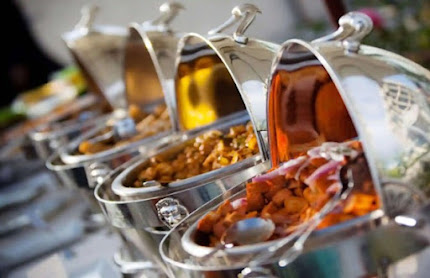The Key Differences Between Fast Casual, Fast Food, and Fine Dining
The restaurant industry is vast, offering diverse dining experiences that cater to different budgets, preferences, and expectations. Among the most common categories are fast food, fast casual restaurants, and fine dining establishments. Each of these has distinct characteristics in terms of service style, pricing, food quality, and overall customer experience. Understanding these differences can help diners make informed choices and restaurant owners refine their business models.
1. Fast Food: Quick, Affordable, and Convenient
Fast food restaurants are designed for speed and affordability. They focus on efficiency, allowing customers to get their meals within minutes. Some of the defining characteristics of fast food establishments include:
Key Features:
Speed of Service: Orders are typically ready in a matter of minutes.
Menu Simplicity: Limited menu options focused on quick preparation and mass appeal.
Low Cost: Meals are inexpensive due to bulk ingredient purchasing and streamlined cooking methods.
Self-Service: Customers order at the counter or drive-thru, with minimal staff interaction.
Consistency: Standardized recipes ensure that food tastes the same across different locations.
Examples:
McDonald’s
Burger King
Taco Bell
KFC
Fast food restaurants are ideal for individuals looking for a quick, budget-friendly meal without the expectation of high-quality ingredients or personalized service.
2. Fast Casual Restaurants: A Middle Ground Between Fast Food and Casual Dining
Fast casual restaurants bridge the gap between fast food and fine dining. They offer higher-quality ingredients and a more inviting atmosphere while maintaining relatively quick service. This category has grown significantly in popularity, as more consumers seek affordable yet healthier dining options.
Key Features:
Higher-Quality Ingredients: Fresh, often organic or locally sourced ingredients compared to fast food.
Limited Table Service: Customers usually order at a counter, but food is sometimes brought to the table.
Customizable Meals: Many fast casual restaurants allow customers to personalize their meals.
More Comfortable Ambience: While not as luxurious as fine dining, the setting is designed to be more welcoming than a typical fast food joint.
Moderate Pricing: Meals are generally more expensive than fast food but significantly cheaper than fine dining.
Examples:
Chipotle
Panera Bread
Shake Shack
Sweetgreen
A fast casual restaurant caters to customers who want better ingredients, fresher food, and a pleasant dining experience without the time and cost commitment of fine dining.
3. Fine Dining: Luxury, Experience, and Exceptional Service
Fine dining restaurants offer a high-end culinary experience that focuses on gourmet dishes, elegant ambiance, and exceptional customer service. They are often chosen for special occasions and cater to those willing to pay a premium for a unique gastronomic experience.
Key Features:
High-Quality Ingredients: Dishes often feature premium ingredients, including exotic spices, imported cheeses, and fresh seafood.
Exquisite Presentation: Attention to detail in plating and garnishing enhances the overall experience.
Extensive Menus and Wine Pairings: Many fine dining establishments offer multi-course meals with wine pairings.
Personalized and Attentive Service: Guests receive full table service from well-trained waitstaff.
Elegant Atmosphere: Upscale decor, soft lighting, and background music contribute to a luxurious experience.
Examples:
The French Laundry
Le Bernardin
Alinea
Per Se
Fine dining is all about exclusivity, making it perfect for special events, business meetings, and fine cuisine enthusiasts.
Choosing the Right Dining Experience
The choice between fast food, a fast casual restaurant, and fine dining depends on multiple factors, including budget, time availability, and preference. Here’s a quick guide to help decide:
Conclusion
Whether you need a quick bite, a balanced meal on the go, or a luxurious night out, there is a restaurant style for every occasion. Fast food provides affordability and speed, fast casual restaurants offer a middle ground with better ingredients and ambiance, while fine dining delivers an exquisite, high-end experience. No matter the choice, understanding these distinctions helps diners enjoy their meals to the fullest. For those craving a delicious and satisfying meal with a blend of convenience and quality, visiting a quesadilla restaurant could be a great option. Many fast-casual eateries now offer gourmet quesadillas with fresh ingredients, making them a perfect example of how the industry continues to evolve. Whether you prefer a quick-service taco shop or a sit-down Mexican grill, the variety within the restaurant industry ensures there’s something for everyone.




Comments
Post a Comment